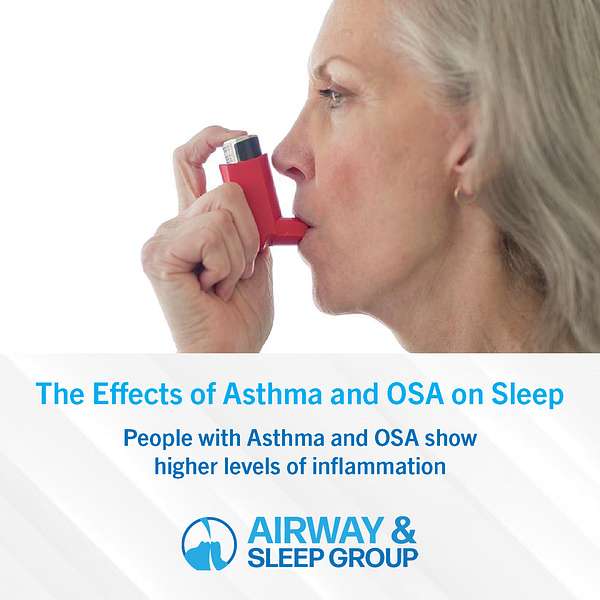
Airway and Sleep Group Podcast
Airway and Sleep Group Podcast
The Effects of Asthma and OSA on Sleep
Research by the Journal of Clinical Sleep Medicine studied the effects of coexisting asthma and obstructive sleep apnea on sleep architecture, oxygen saturation and systemic inflammation in women. Three hundred eighty-four women ages 20 to 70 years underwent overnight polysomnography. The subject also completed questionnaires on airway diseases and sleep complaints. The study analyzed the effect of asthma, OSA, and the combination of asthma and OSA on objectively measured sleep quality and systemic inflammation.
Asthma and OSA show higher levels of inflammation
The study found that the group with both asthma and OSA had higher CRP and IL-6. CRP is a type of protein that is associated with inflammation in the body and can cause unexplained exhaustion, pain, muscle stiffness, soreness and weakness. Very high CRP levels can also cause symptoms like headache or insomnia. IL-6 is an important mediator of fever and of the acute phase response. An elevated IL-6 may mean that the person tested has an inflammatory condition.
Less Quality Sleep for those with Asthma and OSA
The group with both asthma and OSA also had a longer sleeping time in stage N1 sleep and stage N2 sleep. This group also had less time in REM sleep or “rapid eye movement” sleep than the control group with no asthma or OSA.
Stage N1 sleep occurs right after you fall asleep and is very short (usually less than 10 minutes). It involves light sleep from which you can be awakened easily.
Stage N2 sleep lasts from about 30 to 60 minutes. During this stage, your muscles become more relaxed and you may begin to have slow-wave (delta) brain activity.
As REM is often considered the most important and most restorative sleep stage and individuals with both asthma and obstructive sleep apnea get less of it, the study concluded that individuals with both asthma and obstructive sleep apnea are strongly associated with poor sleep. Asthma and Obstructive Sleep Apnea sufferers also have higher levels of CRP and IL-6. These markers denote higher levels of systemic inflammation which can cause fatigue, fever, and joint and muscle pain.
Treating OSA
Airway and Sleep Group employs the latest technology in treating obstructive sleep apnea. Your path to a better night’s sleep begins with a comprehensive examination and diagnosis. Visit www.airwayandsleepgroup.com and visit our blog or podcast pages to learn more about how we treat obstructive sleep apnea.